ZD9XF - ZD9ZS : Tristan da Cunha : Sep 2014
|
|
|
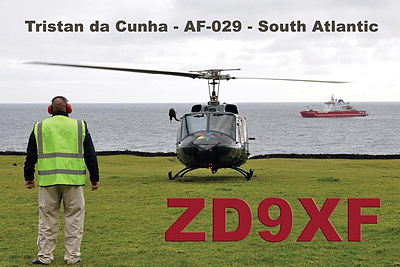 |
|
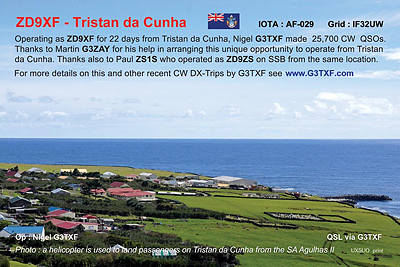 |
|
| The ZD9XF QSL shows the helicopter that ferries arriving passengers between the SA Agulhas II and Tristan da Cunha. |
|
The ZD9XF QSL also shows the settlement of Edinburgh of the Seven Seas, which is the one and only village on Tristan da Cunha. |
|
 |
 |
|
| A helicopter is used to ferry passengers ashore on Tristan da Cunha from the SA Agulhas II |
|
Arriving off Tristan da Cunha in the pre-dawn light. As is often the case, the 2,000m high mountain on Tristan is shrouded in cloud. |
|
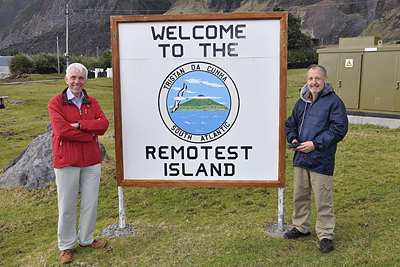 |
 |
|
| Tristan's claim to fame is that it is the remotest inhabited island anywhere in the world. The island's population is about 230. |
The Tristan barge "Tight Lucy" can be seen ferrying passengers' luggage from the SA Agulhas II to the small wharf. |
|
 |
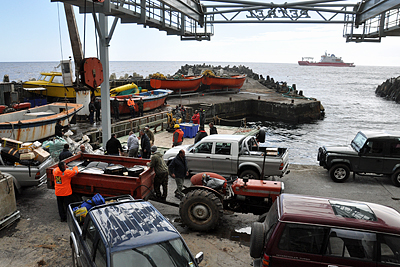 |
|
| The "Tight Lucy" barge is used to ferry luggage from the recently arrived SA Agulhas II across to the shore and the tiny harbour. |
The small wharf on Tristan. All boats have to be hoisted out of the water and kept on the wharf. Boats are not left in the sea. |
|
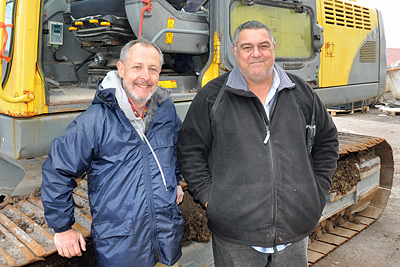 |
 |
|
| Paul ZS1S (ZD9ZS) with Andy ZD9BV. As well as running Tristan Radio (ZOE), Andy also drives one of the cranes on the island. |
Nigel G3TXF with a TS590s and HL-550X amplifier : the ZD9XF station is being visited by Alex Mitham, the island's Administrator. |
|
 |
|
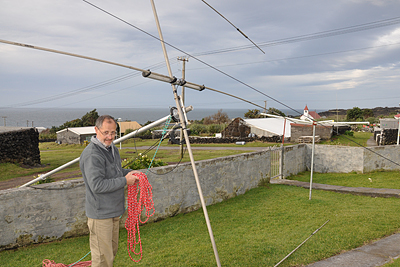 |
|
| Two WARC band verticals (17m and 30m). ZD9XF spent the first week exclusively on the three WARC bands. |
Paul ZS1S assembles his TA33jr tri-bander. The rotator was positioned at the bottom of the pole with a collar at the top. |
|
 |
 |
|
| Paul ZS1S (ZD9ZS) operating on Tristan with an Elecraft K3 and KPA-500 amplifier. Paul's 12v PSU was much bigger than either! |
A rainbow surrounds Paul ZS1S's tri-band beam. Note the vertical cliff right behind the station. SP to VK/ZL is impossible from ZD9. |
|
 |
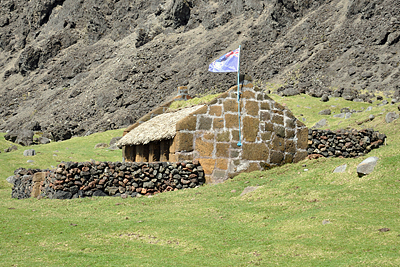 |
|
| There are two lobsters on the Tristan da Cunha flag. Lobsters (crayfish) are the island's major source of income. |
A traditional thatched cottage is preserved as a tourist attraction. On open days the Tristan flag can be seen flying at the cottage. |
|
 |
 |
 |
|
| Tristan's remoteness is illustrated by the distances on this signpost. |
Paul ZS1S adds yet more radials to the 80m vertical. In total 2,000m of wire was used. |
Nigel G3TXF (ZD9XF) with the 80m vertical in the background. |
|
 |
|
 |
|
| Nigel G3TXF (ZD9XF) with Andy ZD9BV in the Tristan Radio Station ZOE, which monitors several VHF channels. |
The view of the settlement from the top of the small "1961 volcano" which is adjacent to the village. Calshot Harbour can be seen. |
|
 |
 |
|
| Paul ZS1S initially installed a TA33jr tri-band beam, but changed to verticals later during his ZD9ZS SSB operation. |
Four vertical antennas (l-r): 80m, 40m, 30m and 17m, with a nice clear take-off towards the North West and the USA. |
|
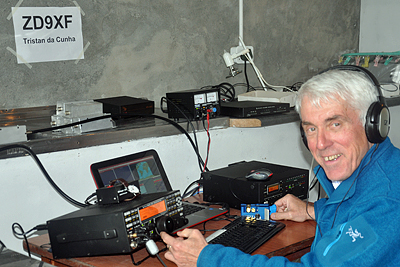 |
 |
|
| Nigel G3TXF operating as ZD9XF with an Elecraft K3 and KPA-500 amplifier. After three weeks the CW QSO total was 25,700. |
Andy ZD9BV shows the MFJ Antenna Analyser that was given to him by Roger G3SXW who operated as ZD9SXW in Sep 1993. |
|
 |
 |
 |
|
| Paul ZS1S with Andy ZD9BV at Andy's "works QTH" : Tristan Radio ZOE. |
The luggage waiting to be loaded on board by means of a sling under the helicopter. |
The helicopter ferries passengers' luggage from Tristan back to the ship. |
|
 |
|
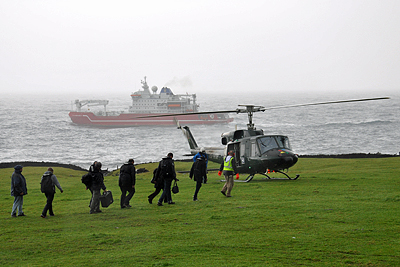 |
|
| The antennas poles are loaded onto the helicopter for the short flight out to the waiting SA Agulhas II. |
The helicopter can take up to eight passengers at a time for the three minute flight out to the helipad on the SA Agulhas II. |
|
|
ZD9XF : QSL via G3TXF:
The full ZD9XF log was up-loaded to both Club Log and LoTW during the operation.
Please use Club Log's Online QSL Request Service (OQRS) to request either a Direct QSL or a Bureau QSL.
Direct QSLs : please do not send your QSLs through the post requesting Direct cards. It's preferable to use OQRS on Club Log for Direct QSLs. It's cheaper, simpler and faster!
Bureau QSLs : please do not send your QSLs through the Bureau. Your Bureau QSL is not needed. Please use OQRS on Club Log to request your Bureau QSL: It's faster and costs you nothing. G3TXF regularly ships Bureau QSLs directly to all Bureaux worldwide.
|
|
|
|
|
|
|
Back to G3TXF Main Page
|
|
|
|
|
|
|
|
|
|
|
|
|
|





























